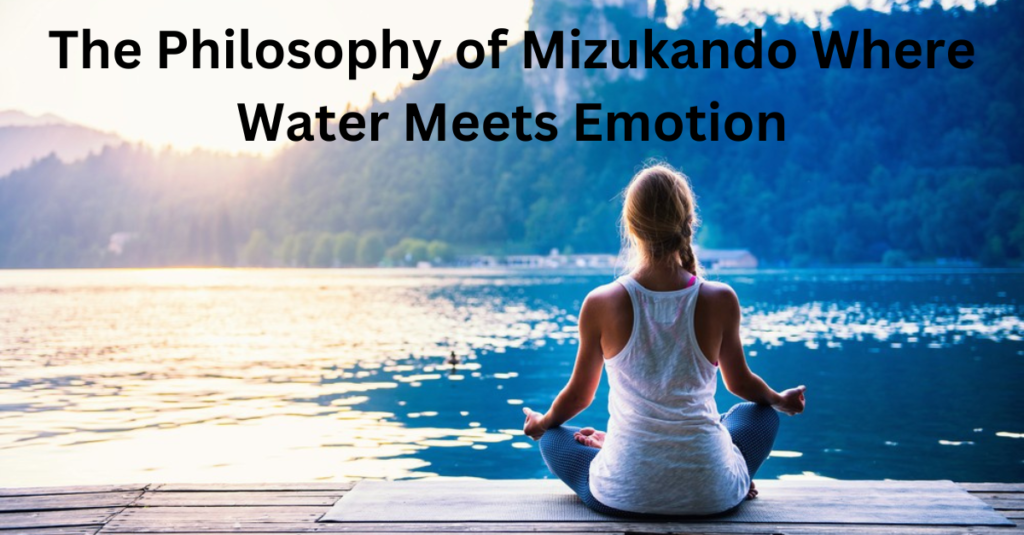Mizukando is a name that resonates with tranquility, elegance, and a unique cultural charm. Whether you have come across the term in literature, architecture, or wellness, Mizukando is associated with Japanese design philosophies and lifestyle concepts that focus on harmony, balance, and serenity. In this complete guide, we will explore everything you need to know about Mizukando, its meaning, its influence on various aspects of life, and how you can incorporate its principles into your daily routine.
What is Mizukando?
To understand Mizukando, we first need to break down the word. “Mizu” means water, and “Kando” refers to an emotional or sensory experience that moves or inspires a person. Combined, Mizukando refers to a powerful connection between water and emotion, typically symbolizing the soothing and rejuvenating qualities that water embodies. This connection has roots in Japanese culture, where water is often a symbol of purity, change, and life.
Mizukando as a concept is not just about physical water but also the broader philosophy of flowing life, ease, and emotional well-being. It seeks to balance the elements of nature and the human spirit, creating a space where calmness and clarity thrive. It is no wonder that Mizukando has found its way into various fields such as architecture, interior design, wellness, and even personal development.
The Origins of Mizukando in Japanese Culture
Japanese culture has always revered water. It is seen in their art, gardens, temples, and traditions. The Japanese believe that water is a conduit between the physical and spiritual worlds, representing both beauty and strength.
The concept of Mizukando is intertwined with two other popular Japanese philosophies: Wabi-Sabi and Shizen. Wabi-Sabi teaches the acceptance of imperfection, while Shizen emphasizes the importance of living in harmony with nature. Mizukando takes inspiration from these ideas and adds the emotional aspect of water, creating a powerful blend of mindfulness and serenity.
In ancient Japan, water was used in rituals and ceremonies to cleanse the soul and bring peace. Temples often have large ponds or streams running through them, and Japanese gardens are designed with water as a central element. The presence of water creates a meditative atmosphere, encouraging reflection and mental clarity. Mizukando draws from this symbolism, extending it to modern design and personal wellness.
Mizukando in Architecture and Interior Design
One of the most popular applications of Mizukando is in architecture and interior design. The philosophy promotes simplicity, minimalism, and a deep connection to nature. Designers who embrace Mizukando aim to create spaces that evoke the calming effect of water, using natural materials, flowing lines, and light to create a serene atmosphere.
Key Elements of Mizukando-Inspired Architecture:
- Natural Materials: Wood, stone, bamboo, and other organic materials are used to establish a sense of authenticity and connection to nature. These materials age naturally, adding to the Wabi-Sabi element of accepting imperfection.
- Water Features: Whether it’s a small indoor fountain, a pond, or a stream running through a garden, the presence of water in the design is critical. Water features encourage mindfulness and relaxation, adding both visual and auditory appeal to the space.
- Minimalism: A core tenet of Mizukando is simplicity. Clutter is removed, and only essential elements remain, allowing for clear, open spaces that promote peace and balance. The minimalist approach helps focus the mind and reduces distractions, mirroring the fluidity of water.
- Light and Shadow: Thoughtful use of natural light and shadows is another important aspect of Mizukando design. By allowing light to play naturally across surfaces, designers can evoke the feeling of a gentle stream or calm water flowing through a room.
Mizukando in Wellness and Mindfulness Practices
The emotional connection that Mizukando creates is often used in wellness practices. Whether it’s through spa treatments, meditation, or yoga, Mizukando encourages practices that help you feel more connected to your inner self, much like the flowing nature of water.
Mizukando in Meditation:
Incorporating the concept of water into meditation is a natural way to connect with the mind’s ebb and flow. Water symbolizes adaptability and purity, reminding us to be open to change and flexible in our responses. In Mizukando meditation, the sound of water, such as waves or flowing streams, is used to calm the mind and deepen the practice.
Mizukando in Spa and Wellness Centers:
Many spa and wellness centers around the world have adopted Mizukando-inspired designs and treatments. These centers often use water features, such as hot springs, fountains, or baths, to create a tranquil and rejuvenating environment. The combination of water, light, and natural materials enhances relaxation and mental clarity.
Mizukando’s influence on wellness goes beyond just physical spaces. It also promotes the idea of self-care and balance. Simple daily rituals, such as a mindful bath or a few moments of stillness near a water feature, can help integrate Mizukando’s calming principles into everyday life.
How to Incorporate Mizukando into Your Life
Whether you’re looking to redesign your home or simply want to adopt a more peaceful mindset, there are several ways you can incorporate the principles of Mizukando into your life.
1. Create a Mizukando-Inspired Space:
Start by evaluating the spaces in your home. Identify areas where you can introduce natural materials, water elements, and minimalistic design. Even a small water fountain in a quiet corner can bring a sense of tranquility to your home. Consider soft lighting, neutral color schemes, and an open layout to enhance the calming atmosphere.
2. Mindful Water Practices:
Use water as a tool for mindfulness and emotional well-being. This could be as simple as taking a few minutes to listen to the sound of water, whether it’s from a fountain or rain outside. You can also engage in water-based activities like swimming, which help you connect with the flow and rhythm of water, promoting a meditative state.
3. Embrace Minimalism:
Clutter can be overwhelming and stressful. Mizukando teaches us to let go of unnecessary distractions and to embrace simplicity. Start by decluttering your living or workspace, keeping only the essentials and focusing on creating a clean, open environment that promotes relaxation and focus.
4. Practice Mizukando Meditation:
Introduce water into your meditation routine. Whether through sound recordings of flowing water or meditating near a natural body of water, use the calming influence of water to guide you toward a more centered and relaxed state of mind.
Mizukando in Modern Society
The influence of Mizukando is growing as more people recognize the importance of balance and mindfulness in a fast-paced world. Modern life often pulls us away from nature and into chaotic environments, but Mizukando reminds us to return to simplicity and harmony.
Many businesses and wellness centers are adopting Mizukando principles to create spaces where people can unwind and reconnect with their inner selves. In cities, where natural landscapes are limited, Mizukando offers a way to bring nature indoors, making urban environments more livable and less stressful.
Conclusion
Mizukando is more than just a design philosophy or wellness trend; it is a way of life that encourages us to slow down, embrace nature, and find peace in simplicity. By incorporating the principles of Mizukando into your home, wellness practices, and mindset, you can create a sense of balance and serenity that flows through every aspect of your life.
Whether through the gentle sound of water, minimalist design, or mindful meditation, Mizukando offers a path toward greater emotional well-being and connection to the world around us.



